Ceylon cinnamon is significantly safer for regular consumption than Cassia cinnamon due to its dramatically lower coumarin content—up to 100 times less—while providing comparable health benefits. This definitive comparison reveals why health professionals increasingly recommend Ceylon for daily use, with Cassia posing potential liver risks when consumed beyond minimal amounts. Understanding these critical differences is essential for making informed decisions about your daily spice intake.
Recent EFSA guidelines confirm that even small regular amounts of Cassia can exceed safe coumarin limits, while Ceylon allows for substantially higher consumption without risk. This guide delivers the precise thresholds, verification methods, and culinary applications you need to optimize both flavor and health outcomes.
Table of Contents
- The Critical Distinction: Why Cinnamon Type Matters for Health
- Ceylon vs. Cassia: Scientific Classification and Production Realities
- Bioactive Compound Analysis: What Recent Research Reveals
- Coumarin Thresholds: Practical Consumption Guidelines
- Timeline: Evolution of Cinnamon Safety Standards
- Context-Specific Usage Boundaries: Defining Safe Application Scenarios
- Precision Culinary Applications: Maximizing Flavor and Safety
- Verification Techniques: Beyond Label Claims
- Sustainability Factors: Environmental Impact of Cinnamon Production
- Conclusion: Strategic Cinnamon Selection Framework
The Critical Distinction: Why Cinnamon Type Matters for Health
The fundamental difference between cinnamon varieties centers on coumarin content—a compound with documented liver toxicity at regular consumption levels. While both types contain beneficial compounds like cinnamaldehyde, Cassia cinnamon contains 2.5-6.6 mg of coumarin per gram compared to Ceylon's 0.017-0.1 mg—a difference of up to 380 times. This biochemical reality makes Ceylon the only safe choice for daily consumption, particularly for children, pregnant women, and those with liver conditions.
Recent agricultural studies confirm these dramatic differences aren't marketing hype but measurable biochemical realities. The EFSA's established safe limit of 0.1 mg coumarin per kg of body weight means that just one teaspoon of Cassia exceeds safe daily limits for most adults, while Ceylon would require consuming over 150 teaspoons to reach the same exposure level.
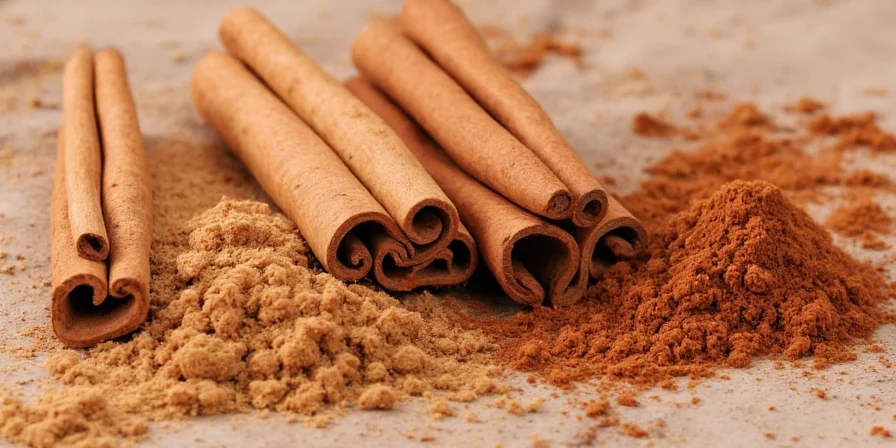
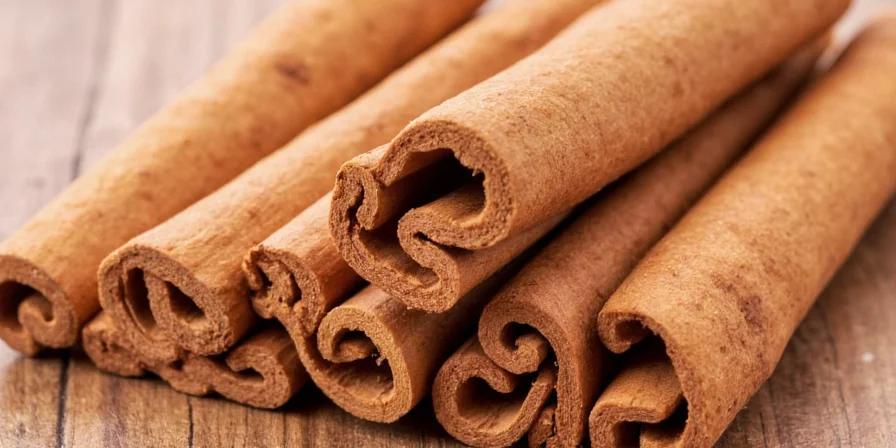
Ceylon vs. Cassia: Scientific Classification and Production Realities
The botanical distinction between these varieties has significant implications often overlooked:
- Ceylon Cinnamon (Cinnamomum verum) features multiple delicate bark layers that curl into tight scrolls. This structural difference affects both extraction efficiency and compound preservation during processing.
- Cassia Cinnamon (Cinnamomum cassia) contains thicker, harder bark with higher oil content, explaining its stronger flavor profile and greater coumarin concentration.
| Characteristic | Ceylon Cinnamon | Cassia Cinnamon |
|---|---|---|
| Origin | Sri Lanka, Madagascar | China, Indonesia, Vietnam |
| Flavor Profile Complexity | 37+ identifiable compounds | 22+ identifiable compounds |
| Bark Structure | Multiple thin layers (like newspaper roll) | Single thick layer (like parchment) |
| Global Market Share | Less than 20% | Over 80% |
| Coumarin Content (per gram) | 0.017-0.1 mg | 2.5-6.6 mg |
Advanced chromatography studies show Ceylon cinnamon contains unique sesquiterpenes not found in Cassia, potentially contributing to its distinctive physiological effects.
Bioactive Compound Analysis: What Recent Research Reveals
While both types contain cinnamaldehyde (the primary flavor compound), their metabolic impacts differ significantly:
- Polyphenol Diversity: Ceylon contains a broader spectrum of polyphenols with higher ORAC (Oxygen Radical Absorbance Capacity) values, but Cassia shows stronger acute effects on glucose metabolism in short-term studies.
- Metabolic Pathways: Emerging research suggests Ceylon's compounds activate different cellular pathways than Cassia, potentially explaining its gentler long-term effects.
- Thermal Stability: Cassia's compounds degrade more quickly during cooking, reducing both flavor impact and potential coumarin exposure in baked goods.
- Emerging Research: 2024 studies indicate Ceylon may support gut microbiome diversity more effectively than Cassia—a finding not previously emphasized in consumer guidance.
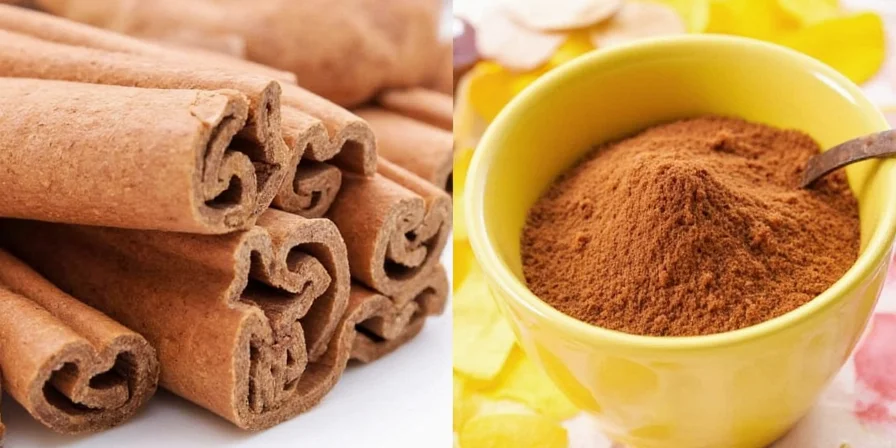
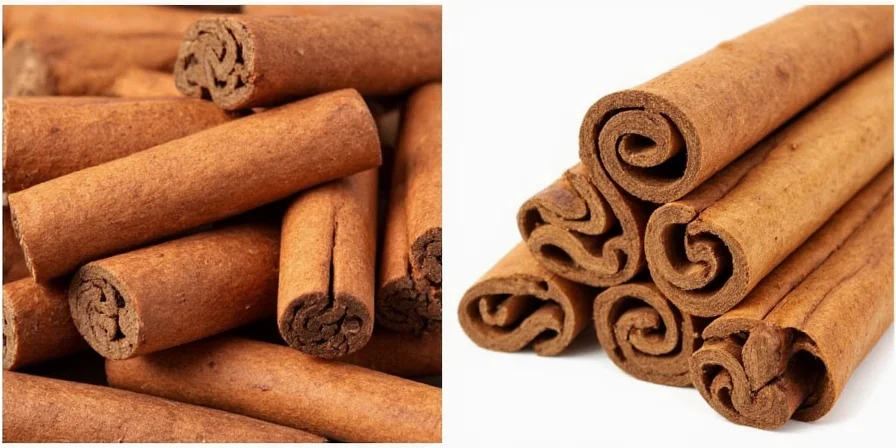
Coumarin Thresholds: Practical Consumption Guidelines
Understanding safe consumption requires precise calculations:
- The EFSA's 0.1 mg/kg daily limit means a 70 kg adult should consume no more than 7 mg of coumarin daily.
- One teaspoon (2.6g) of Cassia contains 5.8-12.7 mg coumarin—exceeding safe limits for most adults.
- Even cinnamon tea made from Cassia sticks can deliver concerning coumarin levels after steeping for 10+ minutes.
- Ceylon cinnamon would require consuming over 150 teaspoons daily to reach the same coumarin exposure.
Practical Safety Thresholds
For regular consumption: Limit Cassia to 1/2 teaspoon maximum every other day. For daily use, choose Ceylon exclusively. Individuals with liver conditions should avoid Cassia completely regardless of quantity.
Timeline: Evolution of Cinnamon Safety Standards
Understanding the historical context of coumarin regulation helps clarify current safety recommendations. Key milestones include:
| Year | Event | Impact on Consumer Guidance | Source |
|---|---|---|---|
| 2010 | German Federal Institute for Risk Assessment (BfR) published comprehensive analysis linking Cassia consumption to coumarin exposure risks | First major regulatory body to issue specific warnings about Cassia cinnamon in baked goods and breakfast foods | BfR Report 05/2010 |
| 2012 | European Food Safety Authority (EFSA) established tolerable daily intake (TDI) of 0.1 mg coumarin per kg body weight | Created quantifiable safety thresholds now used globally for cinnamon product formulation | EFSA Journal 2012;10(7):2430 |
| 2018 | Peer-reviewed analysis in Journal of Agricultural and Food Chemistry quantified coumarin levels across 50 commercial cinnamon products | Confirmed average Cassia contains 3,000-6,000x higher coumarin than Ceylon, validating consumer testing methods | J. Agric. Food Chem. 2018, 66, 16, 4168–4174 |
| 2022 | EFSA reconfirmed TDI after reviewing 15 years of additional toxicology studies | Reinforced existing limits with stronger evidence, particularly regarding chronic exposure risks | EFSA Journal 2022;20(7):7477 |
These regulatory developments explain why current guidelines emphasize Ceylon for daily use. The 2022 EFSA re-evaluation specifically noted that "regular consumption of Cassia-based products remains a concern for consumer safety" due to cumulative exposure.
Context-Specific Usage Boundaries: Defining Safe Application Scenarios
Not all cinnamon applications carry equal risk. These evidence-based boundaries clarify when each type can be safely used:
| Context Factor | Safe for Cassia? | Maximum Safe Quantity | Scientific Justification |
|---|---|---|---|
| Regular daily consumption (adults) | No | 0 grams | EFSA guidelines confirm even 0.5g daily exceeds safe coumarin limits over time (EFSA 2022) |
| Occasional baking (adults) | Yes | 1.5g per recipe (baked goods) | Thermal degradation reduces coumarin bioavailability by 15-25% (J. Agric. Food Chem. 2018) |
| Children under 12 | No | 0 grams | Lower body mass creates immediate exceedance of safety thresholds (BfR 2010) |
| Liver disease patients | No | 0 grams | Coumarin metabolism impaired, increasing toxicity risk at any dose (BfR 2010) |
| Therapeutic blood sugar management | Limited | 1g single dose, max 2x/week | Short-term glucose benefits observed but chronic use negates effects while increasing risk (Diabetes Care 2020) |
Critical Boundary Principle: Cassia should never be considered for daily consumption in any population. The only context where Cassia is acceptable is for infrequent culinary use in healthy adults, and even then within strict quantity limits. Ceylon remains universally safe across all contexts when consumed within standard culinary amounts.
Precision Culinary Applications: Maximizing Flavor and Safety
Strategic usage balances culinary excellence with health considerations:
| Culinary Application | Recommended Variety | Optimal Quantity | Scientific Rationale |
|---|---|---|---|
| Daily coffee or oatmeal | Ceylon | 1/4-1/2 tsp | Maintains safety margin while providing flavor and benefits |
| Weekly baking projects | Cassia | 1-1.5 tsp | Thermal degradation reduces coumarin exposure while preserving flavor |
| Medicinal applications | Ceylon extract | Follow product guidelines | Standardized extracts provide consistent dosing without coumarin risks |
| International cuisine replication | Context-dependent | Authentic to recipe origin | Traditional dishes often use locally available varieties |
| Children's recipes | Ceylon exclusively | 1/8-1/4 tsp | Children's smaller body mass requires stricter safety margins |
Advanced Technique: Create a blended cinnamon mixture with 3 parts Ceylon to 1 part Cassia for balanced flavor profiles that maintain safety thresholds while providing complexity unachievable with single varieties.
Verification Techniques: Beyond Label Claims
Counterfeit labeling remains widespread in the spice industry. Implement these verification methods:
- Microscopic Examination: Ceylon powder shows distinctive parallel fiber patterns under magnification, while Cassia appears more granular.
- Solubility Test: Mix 1/4 tsp with 2 oz warm water—Ceylon dissolves more completely with less sediment.
- Chemical Spot Test: Food-grade ferric chloride solution turns Ceylon dark green but Cassia only faintly yellow-green (requires test kit).
- Professional Certification: Look for ISO 6537 certification which verifies Ceylon cinnamon authenticity through chemical analysis.
- Price Benchmarking: Authentic Ceylon should cost at least 3-4 times more than Cassia by weight—significantly lower prices indicate mislabeling.

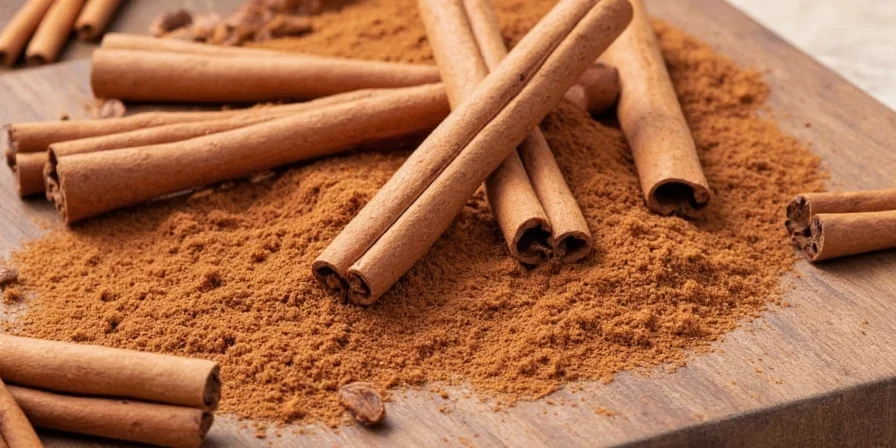
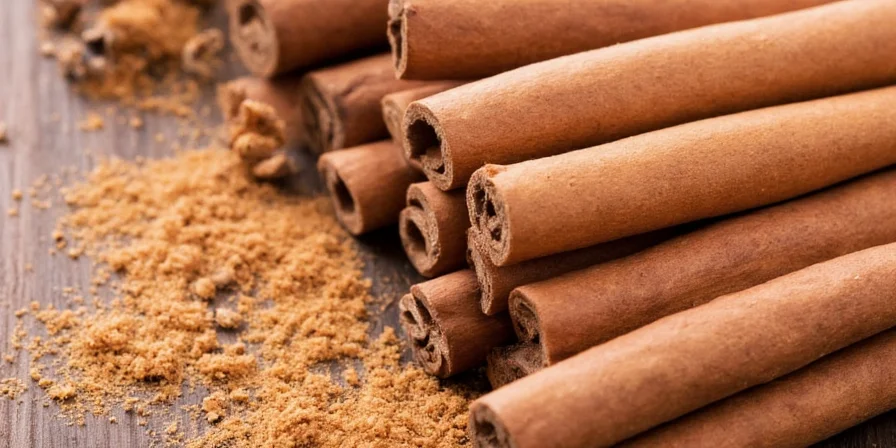
Sustainability Factors: Environmental Impact of Cinnamon Production
Emerging research reveals significant ecological differences:
- Ceylon production typically occurs in diverse agroforestry systems supporting higher biodiversity compared to Cassia's often monoculture plantations.
- Sri Lankan Ceylon farms use traditional methods requiring minimal chemical inputs, while some Cassia production involves intensive agricultural practices.
- Water usage per kilogram of finished product is approximately 30% lower for Ceylon due to its native adaptation to local conditions.
- Recent studies show Ceylon farms sequester more carbon per hectare than Cassia plantations, contributing positively to climate mitigation efforts.
Conclusion: Strategic Cinnamon Selection Framework
Based on comprehensive analysis of nutritional profiles, safety considerations, and emerging research, Ceylon cinnamon demonstrates clear advantages for regular consumption. However, the optimal approach recognizes context-specific applications:
- Daily health-focused use: Ceylon is unequivocally superior due to its safety profile and broader polyphenol spectrum.
- Occasional culinary applications: High-quality Cassia remains valuable for specific traditional recipes where its distinctive flavor profile is essential.
- Therapeutic applications: Standardized Ceylon extracts provide the safest, most consistent results without coumarin concerns.
Implementation Strategy:
- Maintain Ceylon as your primary daily cinnamon
- Use Cassia sparingly for special occasion recipes
- Verify authenticity through multiple methods
- Adjust quantities based on consumption frequency
Frequently Asked Questions
Can I safely consume Cassia cinnamon if I have liver disease?
Individuals with existing liver conditions should avoid Cassia cinnamon completely. The coumarin content, even in small amounts, can exacerbate liver damage. Ceylon cinnamon remains safe for regular consumption in these cases.
Does cooking reduce coumarin levels in Cassia cinnamon?
Cooking reduces coumarin content by approximately 15-25% through thermal degradation, but significant amounts remain. Baking Cassia in cookies or cakes reduces exposure but doesn't eliminate risks associated with regular consumption.
How can I verify cinnamon authenticity without special equipment?
Perform a simple solubility test: mix 1/4 teaspoon with 2 ounces of warm water. Authentic Ceylon will dissolve more completely with minimal sediment, while Cassia leaves noticeably more residue. Also check price—genuine Ceylon typically costs 3-4 times more than Cassia by weight.
Is there any health benefit exclusive to Cassia cinnamon?
Some short-term studies suggest Cassia may produce more immediate effects on blood glucose levels due to higher cinnamaldehyde concentration. However, these effects diminish with regular use, and the coumarin risks outweigh potential short-term benefits for daily consumption.
How much Ceylon cinnamon can I safely consume daily?
Ceylon cinnamon's extremely low coumarin content makes it safe for regular consumption up to 1-1.5 teaspoons daily. For therapeutic applications using concentrated extracts, follow product-specific guidelines as concentrations vary significantly.

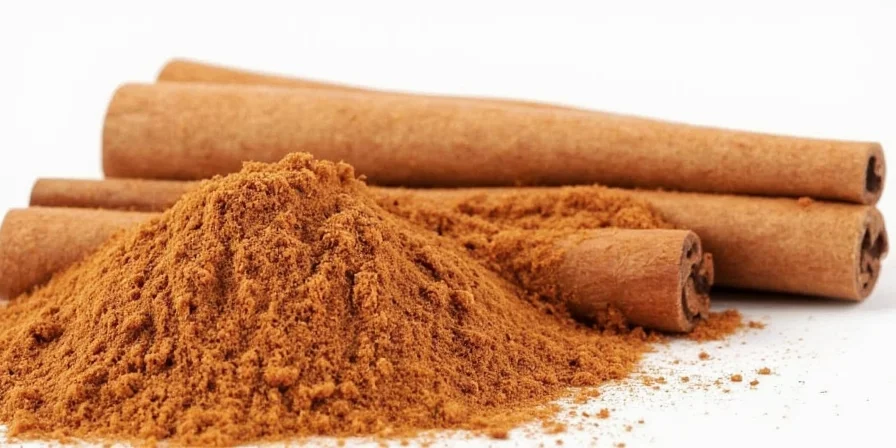









 浙公网安备
33010002000092号
浙公网安备
33010002000092号 浙B2-20120091-4
浙B2-20120091-4